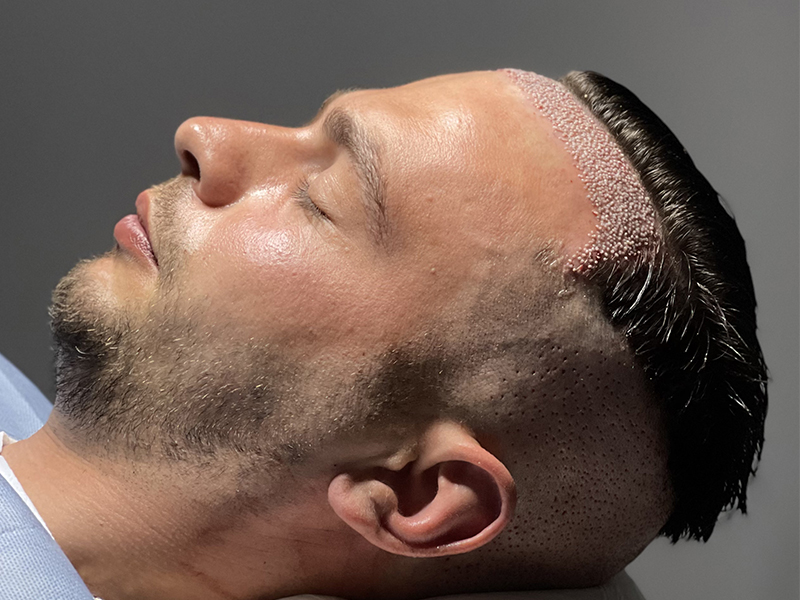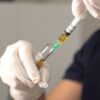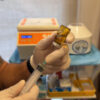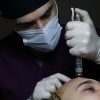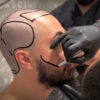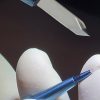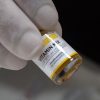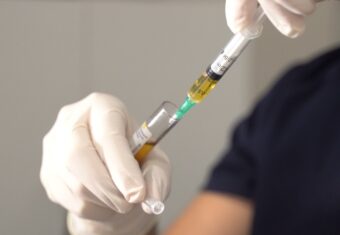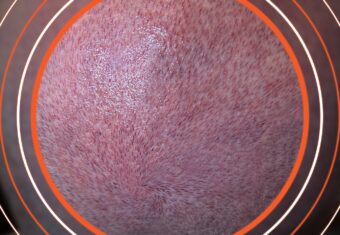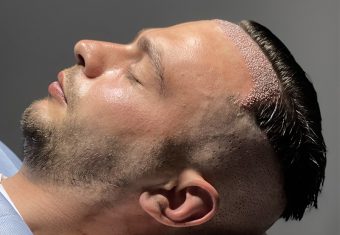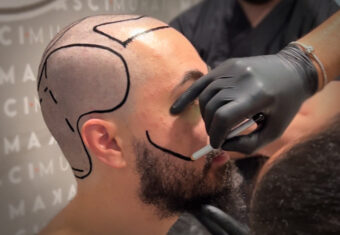Contents
What is a Hair Transplant ?
Hair transplantation is the process of transferring the hair follicles taken from the nape area, which is called the donor area, to the areas with hair loss problem.
Who is suitable for hair transplantation?
The cause of hair loss should be well investigated. If the hair loss problem is caused by genetic reasons, hair transplantation should be preferred. There is no other treatment for the hair loss problem, which is caused by genetic reasons, other than hair transplantation. Apart from genetic reasons, hair loss due to an external factor can be eliminated with supportive treatments. With the tests to be done before the operation, it can be easily diagnosed whether the cause of hair loss is due to genetic reasons or an external factor.
Is skin care necessary before hair transplantation?
After performing the necessary tests and making sure that there is no problem for the operation, the area to be planned, the hair transplant technique to be used, the number of grafts to be studied and similar parameters are evaluated. No extra care is required before the operation. The post-operative calendar will be followed by your doctor.
What are the Hair Transplantation Methods?
Today, although there are sub-branches, there are two different hair removal and two different hair transplantation methods.
On the receiving side;
- FUE technique
- FUT technique
On the October side;
- DHI technique
- Sapphire FUE Method
In the FUE technique, hair follicles in groups in the donor area are collected by means of special apparatus and micro motor. Shedding status of the person and donor area quality are analyzed in the computer environment before the operation. The determined hair follicles are taken without disturbing the tissue integrity. Since the integrity of the tissue is not disturbed, there is no disturbing scar after the operation. In a short time like 10 days, the donor area fully recovers and the person can return to her social life.
FUT Hair Transplant
In the FUT technique, a small piece of tissue is removed from between the two ears and separated into grafts. The number of grafts that can be taken is very limited. Today thid method is not preferred due to the scar that will form between the two ears after the operation. This trace is permanent and continues to bother the person constantly.
How do we do the hair transplantation?
When it comes to the transfer part, the aim of both hair transplantation techniques is to transfer the hair follicles taken from the donor area with the FUE method to the area needed in the healthiest way. The main difference between the two hair transplantation techniques is that in the sapphire channel technique, the places where the grafts will be placed are prepared in advance and then transferred to the opened channels with the help of special apparatus, while in the DHI technique, the preparation and placement of the grafts takes place at the same time. It should be known that there are positive and negative methods in both techniques. The planning made is taken as a basis when choosing the hair transplant method to be used. Within planning, one technique may be more effective than another.
Is the Sapphire Channel Hair Transplantation Method or DHI Better ?
Although the aim of the two hair transplantation techniques is to ensure the most healthy transfer of the roots collected from the donor area with the FUE method, one technique can be more effective than the other according to the planning made from time to time.
To explain briefly;
In the sapphire canal hair transplantation method, the hair directions can be given more effectively since the hand never leaves the transplant area. While this sapphire canal is the positive aspect of the hair transplantation method, the negative aspect of the technique is that it can damage existing hair follicles due to the sharpness of the sapphire tips used. If the hair loss problem is completely realized in the planned area or if the existing hair follicles are thought to be shed in the near future, the sapphire channel method will be effective because the hair directions can be given more effectively.
The tips used in the DHI hair transplantation technique are not cutting but piercing tips. Therefore, if there are hair follicles to be protected in the planned area, more effective protection can be achieved compared to the sapphire canal method. While this is the positive aspect of the DHI technique, since the implanter pens used are disposable, the hand is separated from the transplant area in each transfer while the hair directions are given, and therefore the unbalance of the hair directions is the negative aspect of this technique. If there are hair follicles to be protected in the planned area, the existing hair follicles can be protected more effectively with the DHI hair transplantation technique.
What are the Hair Transplant Stages?
Although the logic of the stages in the operation does not change, the way it is done varies according to the technique used.
If sapphire channel hair transplantation technique is used;
The hair follicles, which are analyzed in the computer environment before the operation, are collected from the donor area one by one, without damaging the donor area, with the FUE technique. Afterwards, the places where the roots taken via sapphire tips (according to the number and quality, planning) will be placed are prepared one by one. These prepared places are called ‘channels’, from which the name of the sapphire channel technique comes from. After the preparation of the places is finished, the collected roots are placed in the prepared places with special apparatus called forceps, and the operation is completed in this way.
In the DHI choi-pen implanter hair transplantation technique, unlike the sapphire canal hair transplantation technique, the preparation and placement of the grafts takes place at the same time. Just like in the sapphire canal technique, the roots, which are analyzed and determined in the computer environment before the operation, are collected one by one with the FUE technique. Then, with the help of special apparatus called choi-pen or implanter pen used in DHI hair transplantation technique, both places are prepared and placed at the same time. This is where the name of the DHI technique comes from. It stands for ‘direct hair implantation’.
Which Hair Transplantation Technique is Planted More Often?
Another issue that many people who do research wonder about is the frequency of hair transplantation. It is generally thought that the frequency varies according to the technique used in the operation, but this idea is not a correct one. In both techniques, the frequency of the operation does not change according to the technique used, since the latest technology and the most compatible apparatus with human tissue are used.
The main factors that determine the frequency are;
Planning of the doctor performing the operation,
It is donor site quality.
There are also two important factors regarding the quality of the donor area. The first of these is the number of hair follicles in cm2 and how many cm2 the donor area consists of, and the other is the thickness of a single hair strand. Some people have fine hair, while others have thicker hair. The thickness of the hair fiber is a genetic factor and is one of the main factors that play a role in the frequency of transplantation. The thicker the hair strands, the higher the planting frequency will be.
Is Pain Felt During Hair Transplant Operation?
Regardless of the technique used, the entire procedure is performed under local anesthesia using painless anesthesia devices. A person’s consciousness is clear except when she sleeps voluntarily. No pain is felt during or after the operation.
What is sedation? Do I Have to Get Sedation?
During local anesthesia in sedated hair transplantation, the person is put into semi-sleep and awakened after anesthesia. With the advent of painless anesthesia devices, sedation has become an undesirable method.
Is Hair Transplantation Comfortable?
Contrary to popular belief, thanks to the technologies used, the person does not feel any pain during the hair transplant operation. During the operation, they can optionally watch TV, listen to music, read a book or sleep. Along with the planned breaks (such as lunch breaks), a need break can be given when requested (such as a washbasin, a drink) in line with the person’s request.
Who and Where Does Hair Transplantation?
At the beginning of the issues to be considered are who will perform the hair transplant operation and where the operation will take place. In order not to encounter a bad surprise, a good research should be done before the operation, reference should be taken from people who have had hair transplant surgery before, the person who will perform the operation should be interviewed in person, and the place where the operation will take place should be seen. Since we will have to endure the consequences of a bad experience for the rest of our lives, maximum attention should be paid before the operation.
How Long Does a Hair Transplantation Take?
The duration of the operation may vary depending on many occasions such as the number of grafts, the size of the area to be planned, and the quality of the donor area. After an average of 8-9 hours of operation, there is no situation that requires hospitalization. The person is discharged on the same day. The person can return to her social life directly.
How Many Days Should I Allocate for my Hair Transplant Operation?
It will be enough to allocate one day for the operation. On the same day, the hair transplant operation is completed and the person is discharged. A direct return to social life can be achieved, but the planting area should be protected against external factors, especially in the first 10 days. Afterwards, the healing process of the hair is completed and the person can return to her social life.
When is the result of hair transplantation seen?
Although it changes according to the metabolism of the person and the supportive treatments to be applied after the operation, in general, the crust is cast on the 10th day. After the molting, the person will be in the image of having their hair cut to a number. There is no disturbing image and a return to social life can be achieved. In the following 2-3 weeks, the process called shock shedding begins and the transferred hair sheds rapidly. This shedding is a temporary shedding and new hair growth begins towards the end of the 4th month. Intense hair growth starts between 6-7 months and continues throughout the year. It will take up to a year to get the final result. Afterwards, no new hair growth or loss occurs. Existing hair continues to live with the person throughout his/her life.
How to Wash Hair After Hair Transplantation?
After the operation, washing is done with a specially prepared washing set consisting of foam and shampoo for 10 days. The first day is the control day. Washing is not done. On the second day, hair washing begins. The point to be considered is the protection of the planting area against impacts and rubbing during the washing process. While the washing process can be done with the help of one person, it can also be done alone. The washing products used are in foam form and are very easy to use. During this period, the planting area should be protected from impacts and abrasions. First, the crusts are softened with the help of softening foam. The aim here is to create a movement area for the hair strand by softening the crusts. Afterwards, shampoo is applied to clean the remaining foam residues and to clean the planting area from external factors that we are exposed to all day. After the shampoo is applied, it is rinsed with water at room temperature and dried. This process can be done once a day, at any time of the day that is available. The important point is that the washes are done at approximately the same time. This process continues for 10 days. At the end of the 10th day, the hair is completely attached to the tissue. It is possible to return to the normal washing routine.
What is the Age Limit for Hair Transplantation?
Although there is no clear age limit, it is not recommended for very young or old age. Since the map of shedding may change in hair transplantation at a very young age, the person may encounter a bad appearance in later ages.
Hair transplant operation is not recommended due to chronic diseases that may occur in later ages.
Does Hair Transplant Really Work?
Although hair loss is mostly caused by genetic reasons in women and men today, it is one of the common problems due to stress, irregular diet, irregular life, cosmetics used, etc. and negatively affects social life. In problems experienced due to an external factor,
- Autologous stem cell therapy
- Infusion therapy
- hair laser
- Hair mesotherapy
- While the problem of hair loss can be eliminated with supportive treatments such as grooming kits, there is no other treatment method that can provide a permanent solution other than hair transplantation in hair loss caused by genetic reasons. Although it may seem like a difficult operation at first because it is after a long operation, it is often preferred because of the technologies used, the painless procedure and the short time it takes to return to social life.
Which months are suitable for hair transplantation?
The general opinion is that the winter months are more suitable for hair transplantation but that is not the case.There is no seasoal reaction on the head that has been transplanted so you can live anywhere in the world. Since the hair loss problem negatively affects our social life, regardless of whether it is a woman or a man, the earliest time to have an operation will be the most effective time for people, since our daily routine is taken as a basis. Although people think that it will be very difficult after the operation, it has become very comfortable after the operation in today’s conditions. After the operation, people can continue their daily lives. The most difficult part is the psychological and physical pressure experienced before the operation.
How Many Years Does Hair Transplant Last?
Hair transplantation is the only method that people with genetic hair loss can apply to get a permanent result with today’s technology. Since the donor area is genetically coded not to fall out, the transferred hair follicles do not shed again unless the person experiences a specific situation (such as long-term treatments, intensive drug use, cancer treatment).
How Many Hairs Does One Graft Make?
In the graft-hair strand dilemma, which is one of the most curious subjects, the general opinion is that 1 graft corresponds to 1 hair strand, but this is a misunderstood situation. One strand of hair may come out of a graft, or several strands of hair may come out. The hair stays in groups in the nape area, which we call the donor area, regardless of men and women. While some groups have 1 or 2, some groups have more hair follicles. Although it varies from person to person, the donor area that has groups of 3 or more hair follicles is considered a quality donor area. In the FUE stage, which is the first stage of the operation, the aim is to target more multiple roots. Depending on the donor area grouping of the person, the apparatus to be used in the FUE procedure is selected by your doctor. The more multiple grafts can be taken, the more intense the result will be.
How is the number of grafts determined? How Many Grafts Do I Need?
Although donor area analysis is examined in computer environment before the hair transplant operation, it is not possible to determine a precise number of grafts. The planned number of grafts; The condition of the hairy tissue may change depending on many factors such as the structure of the hair follicles and the texture of the donor area. During the extraction of hair follicles made with the FUE method, planning is made in two main parameters depending on the donor area situation.
If the collected hair follicles can be collected as multiple, if the condition of the donor area allows multiple follicles to be collected, in order not to leave a scar in the donor area after the operation, the number of hair follicles in a graft is focused on increasing the number of hair follicles in a graft, within the planning made for the transplantation area with a suitable tip selection. . The main factor that determines the success of the hair transplant operation is how many hairs are transferred rather than how many grafts are transplanted. With this study, the desired density is achieved by transferring the number of hair strands needed within the scope of the planning made, and an image disorder that may occur is prevented by applying optimum stress to the donor area.
If the collected hair follicles cannot be collected as multiple, if the condition of the donor area does not allow for multiple follicles to be collected, the number of collected hairs is tried to be increased by increasing the number of grafts within the planning made for the transplantation area with a smaller tip selection, in order to avoid any traces in the donor area after the operation. In this case, the frequency after the operation can be obtained in the form of more grafts and more hairs.
Although an idea about the condition of the donor area is obtained in the analyzes performed before the hair transplant operation, the number of grafts to be studied becomes definite when the operation is started.
To summarize briefly,
The number of hair strands required for a dense appearance after the operation;
- It can also be achieved by trying to increase the number of hair follicles in a graft,
- It can also be achieved by increasing the number of grafts.
Which route to choose can be decided according to the condition of the donor area.
What are the Advantages of Hair Transplantation?
Hair loss, especially seen in men and usually caused by genetic reasons, affects the social life of people in a negative way. Any problem with hair, which has an important place in terms of aesthetics,can lead to loss of self-confidence. Although it is not directly noticed, the person with loss of self-confidence will experience negative effects in his normal life. Since these problems will disappear after hair transplantation, there will be a positive increase in the person’s social life.
Hair Transplant Results
Many clinics share before and after photos via social media with the permission of people who have had a hair transplant operation before. Social media channels can be used actively in the research before and after the hair transplantation. Shared photos can give people an idea before the operation. It can be analyzed which clinic is more successful in which spill type. The point to be considered is not to look only at the profile angle when evaluating the success of the operation, but to make an evaluation by considering all angles. Because while many people are satisfied with their appearance in the profile angle, they are uncomfortable with their appearance in the middle and top or donor area. For this reason, more care should be taken when evaluating clinics that share using only profile angles, and clinics that share from all angles should be preferred.
For a more detailed review, you can reach the before and after images HERE
Hair Transplant Prices
There are many different reasons that can change the operation price. Different clinics may apply different procedures (pricing per graft, planning according to the size of the planting area, fixed price application). Although the issue of price is an important issue, it is necessary to agree on the parameters that need to be evaluated first. Clinical references, meeting with the person who will perform the hair transplant operation before the operation, clinical control are among the issues that should be dealt with before the price. An approach that will be better when it’s more expensive or worse when it’s cheaper isn’t the most accurate.
You can get information about current hair transplant prices HERE.

